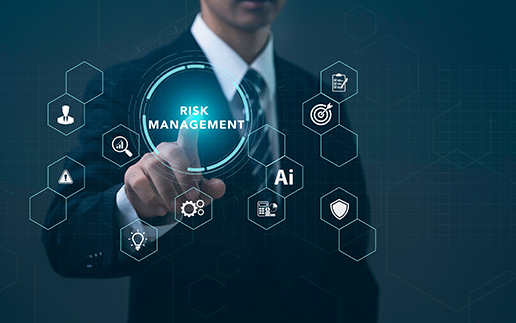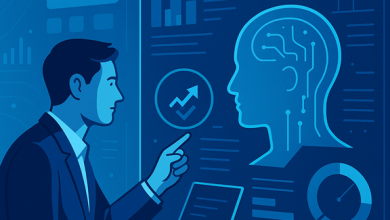
Artificial intelligence is redefining how organisations approach risk management and compliance. Across financial and regulated sectors, it can accelerate best practice, ensure adherence to industry legislation, and strengthen resilience in the face of growing complexity. Rather than replacing human judgment, AI is enabling faster, more data-informed decisions and improving visibility across the enterprise.
The emergence of agentic AI systems, capable of acting autonomously within defined governance frameworks, signals the next stage in this transformation. These adaptive systems can operate within existing governance, risk, and compliance (GRC) workflows, making compliance intelligence continuous rather than periodic.
However, unlocking the full potential of AI requires getting a few foundational elements right. Success hinges on accurate data, seamless integration, and a secure environment. When these pieces are in place, AI can transform how you manage compliance and mitigate risk across your entire organisation.
Why accurate, trusted data underpins successful AI-driven compliance
For AI to be most effective in managing risk and compliance, it must operate on a foundation of accurate, trusted, and up-to-date data. This is especially true when using AI to monitor and interpret legal or regulatory requirements. Using standard generative AI tools can be a high-risk strategy, as the data they reference may be inaccurate or outdated, leading to flawed conclusions and potential compliance breaches.
For example: imagine an organisation using AI to keep up with changes to GDPR. An AI system trained on verified data sources can continuously scan updates from the Information Commissioner’s Office (ICO) and highlight where new guidance might impact existing customer data-handling policies. This ensures compliance officers are not caught off guard by regulatory changes and can adapt quickly.
Without reliable data however, the AI’s output becomes questionable. To deliver genuine value, AI tools must be connected to a trusted, verified knowledge base. This gives the user confidence that the insights and recommendations received are based on correct and current information, and are therefore accurate and auditable.
Data integration: building a comprehensive risk management framework
Integrating internal data is equally critical to effective AI-driven risk management. This includes information about risks, audit findings, internal policies, and relevant regulations. Bringing this data into a single, trusted environment automates the process of analysing your current compliance and risk posture.
This consolidation allows AI to identify high-risk areas that need immediate attention and suggest appropriate controls aligned with legislation. To achieve this, internal data must remain complete, consistent, and continually updated – ensuring both humans and AI systems can make informed, defensible decisions.
To use another example, consider audit automation. A business can integrate its audit logs, policy repository, and historical risk register into an AI-driven compliance dashboard. The system then automatically assesses whether current controls align with necessary standards and flags any gaps. This provides a clear, real-time view of your compliance status.
Empowering the wider business: decentralising risk management with AI
One of the most powerful advantages AI brings is the ability to empower the wider business—not just the central risk and compliance team. For this to happen, it must be integrated directly into the workflows of the entire organisation. By providing intuitive, embedded AI tools within everyday systems, risk ownership is decentralised. This means that risk managers, department leads, and even front-line employees can access real-time insights and automated guidance, tailored to their specific roles and responsibilities. They are better equipped to identify, assess, and respond to potential risks as they arise, without needing to rely solely on specialist intervention.
This decentralised approach helps foster a culture of shared accountability for risk and compliance throughout the organisation. Collaboration is improved as teams can communicate and act on risks within shared platforms.
Decision-making becomes faster and more informed, with AI quietly assisting in the background – effective, known, but invisible. Those closest to the issue have the information and recommendations they need at their fingertips. With enhanced risk visibility across business units, leadership gains a clearer, more comprehensive view of the organisation’s risk posture, supporting both operational and strategic decisions.
For instance, a risk manager preparing for a supervisory review can benefit greatly from embedded AI. Instead of manually combing through dozens of risk assessments and control reports, the AI in their GRC platform automatically consolidates this information. It highlights areas where control evidence is weak and suggests corrective actions, streamlining preparation and strengthening compliance.
Safeguarding risk management with secure and private AI
Finally, institutions must ensure that AI systems operate within a clearly defined, secure environment and that their outputs are both traceable and explainable.
By establishing clear guardrails, AI’s power can be directed toward enhancing the risk management and compliance functions effectively, giving users confidence that data remains protected while working towards a more resilient and compliant future.



